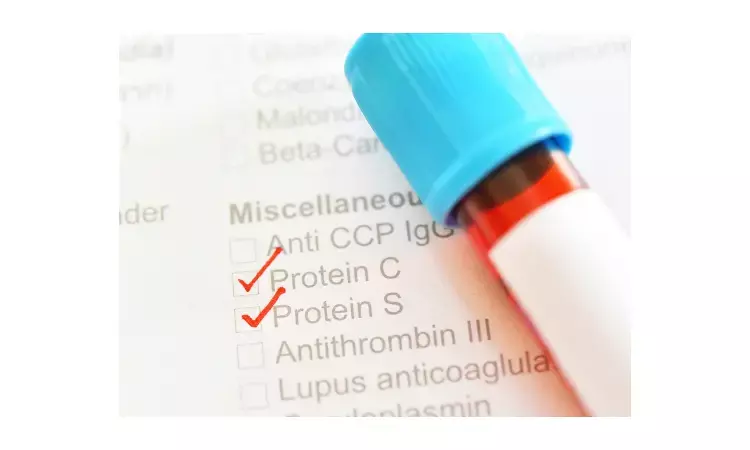- Home
- Medical news & Guidelines
- Anesthesiology
- Cardiology and CTVS
- Critical Care
- Dentistry
- Dermatology
- Diabetes and Endocrinology
- ENT
- Gastroenterology
- Medicine
- Nephrology
- Neurology
- Obstretics-Gynaecology
- Oncology
- Ophthalmology
- Orthopaedics
- Pediatrics-Neonatology
- Psychiatry
- Pulmonology
- Radiology
- Surgery
- Urology
- Laboratory Medicine
- Diet
- Nursing
- Paramedical
- Physiotherapy
- Health news
- Fact Check
- Bone Health Fact Check
- Brain Health Fact Check
- Cancer Related Fact Check
- Child Care Fact Check
- Dental and oral health fact check
- Diabetes and metabolic health fact check
- Diet and Nutrition Fact Check
- Eye and ENT Care Fact Check
- Fitness fact check
- Gut health fact check
- Heart health fact check
- Kidney health fact check
- Medical education fact check
- Men's health fact check
- Respiratory fact check
- Skin and hair care fact check
- Vaccine and Immunization fact check
- Women's health fact check
- AYUSH
- State News
- Andaman and Nicobar Islands
- Andhra Pradesh
- Arunachal Pradesh
- Assam
- Bihar
- Chandigarh
- Chattisgarh
- Dadra and Nagar Haveli
- Daman and Diu
- Delhi
- Goa
- Gujarat
- Haryana
- Himachal Pradesh
- Jammu & Kashmir
- Jharkhand
- Karnataka
- Kerala
- Ladakh
- Lakshadweep
- Madhya Pradesh
- Maharashtra
- Manipur
- Meghalaya
- Mizoram
- Nagaland
- Odisha
- Puducherry
- Punjab
- Rajasthan
- Sikkim
- Tamil Nadu
- Telangana
- Tripura
- Uttar Pradesh
- Uttrakhand
- West Bengal
- Medical Education
- Industry
Edoxaban no better than DAPT after TAVR: ADAPT-TAVR Trial

Thrombosis is a most common complication of cardiac procedures. It is unknown whether direct oral anticoagulant edoxaban can reduce leaflet thrombosis and the accompanying cerebral thromboembolic risk after transcatheter aortic-valve replacement (TAVR). Also, the causal relationship of subclinical leaflet thrombosis with cerebral thromboembolism and neurological or neurocognitive dysfunction remains unclear.
A multicenter, open-label randomized trial revealed that in patients who have no indication for long-term anticoagulation after successful TAVR, the incidence of leaflet thrombosis was numerically lower with edoxaban than with DAPT. The effect on new cerebral thromboembolism and neurological or neurocognitive function were also not different between both the groups. The study is published in Circulation journal.
The trial compared edoxaban with dual antiplatelet therapy (DAPT; aspirin plus clopidogrel) in patients who had undergone successful TAVR and did not have an indication for anticoagulation. The primary end point was an incidence of leaflet thrombosis on four-dimensional computed tomography (CT) at 6-month. Key secondary end points were the number and volume of new cerebral lesions on brain magnetic resonance imaging (MRI) and the serial changes of neurological and neurocognitive function between 6-month and immediate post-TAVR.
The results of the study were
• A total of 229 patients were included in the final intention-to-treat population. There was a trend toward a lower incidence of leaflet thrombosis in the edoxaban group than in the DAPT group (9.8% vs. 18.4%; absolute difference, −8.5%; −17.8% to 0.8%.
• The percentage of patients with new cerebral lesions on brain MRI (edoxaban vs. DAPT; 25.0% vs. 20.2%; difference, 4.8%; 95% CI, −6.4% to 16.0%) and median total new lesion number and volume were not different between two groups.
• Also, the percentages of patients with worsening of neurological and neurocognitive function were not different among the groups.
• The incidence of any or major bleeding events were not different between two groups. No significant association of the presence or extent of leaflet thrombosis with new cerebral lesions and a change of neurological or neurocognitive function was found.
Researchers concluded that "In patients without an indication for long-term anticoagulation after successful TAVR, the incidence of leaflet thrombosis was numerically lower with edoxaban than with DAPT, but this was not statistically significant. The effect on new cerebral thromboembolism and neurological or neurocognitive function were also not different between two groups. Because the study was underpowered, the results should be considered hypothesis-generating, highlighting the need for further research."
Reference: https://doi.org/10.1161/CIRCULATIONAHA.122.059512
Medical Dialogues consists of a team of passionate medical/scientific writers, led by doctors and healthcare researchers. Our team efforts to bring you updated and timely news about the important happenings of the medical and healthcare sector. Our editorial team can be reached at editorial@medicaldialogues.in.
Dr Kamal Kant Kohli-MBBS, DTCD- a chest specialist with more than 30 years of practice and a flair for writing clinical articles, Dr Kamal Kant Kohli joined Medical Dialogues as a Chief Editor of Medical News. Besides writing articles, as an editor, he proofreads and verifies all the medical content published on Medical Dialogues including those coming from journals, studies,medical conferences,guidelines etc. Email: drkohli@medicaldialogues.in. Contact no. 011-43720751


